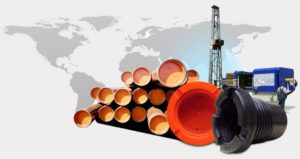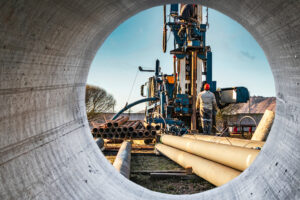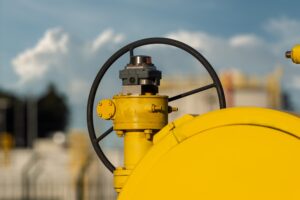OCTG (oil country tubular goods) refers to a collection of rolled metal products, more commonly known as pipes, and the various accessories included in their manufacture and processes. This can include drill, casing or tubing pipes, thread protectors, stabbing guides, bumper rings and pipe chocks. For the purpose of this educational tidbit, we will be discussing pipes, as they are far an away the most crucial part of OCTG as a whole. The piping products qualify as OCTG due to the specifications of each pipe in regards to their acceptable loading conditions, and/or what they can transfer, how strong they are, and their composition.
Drill pipe refers to the heavy tubes, usually seamless, used in the rotation of the drill bit and also the drilling fluid, to which they can be joined together using tool joints. The pipe is subject to axial tension (due to it’s own dead weight while in use), high internal pressure (due to the exhaust of drilling fluid) and extremely high torque (due to actual drilling and turning of the drill bit). In other words, drill pipes are heavy duty, extremely strong pipes, and are crucial in any OCTG endeavor.
Casing Pipe is the pipe used to line the borehole, which is the actual hole dug into the ground to get to the oil. Like the drill pipe, it too is subject to axial tension. However, it differs in that while needing to handle internal pressure from the oil itself, there is also external pressure from the rock and sediment it has been bored into. It too is extremely heavy duty and crucial to OCTG.
Tubing pipe is the pipe that goes inside the casing pipe. This is the pipe that the oil itself will eventually make its way out of. The most simplistic of the OCTG family, tubing pipes can usually be found in segments of about 9m (30 ft), with threaded connections on each end, which can be protected with drill pipe protectors during transportation and storage. These protectors also help protect against any corrosion that could happen during storage, which could cause major problems when tons of oil are being pumped through.
Typically, OCTG manufacturing processes include continuous mandrel-rolling processes and push bench processes for tubular goods sized between 21 and 178 mm OD. For sizes anywhere from 140 to 406 mm OD, plug mill rolling is used. For those found between 250 and 660 mm OD, cross-roll piercing and pilger rolling processes are used. These processes usually don’t include the thermo-mechanical processes usually used for the strip and plate products, the kind which you might find on welded pipe. To compensate, heavy duty high strength seamless pip is manufactured, done by increasing the alloy content in combination with a heating treatment with help further strengthen the pipe, such as quench and temper.
As you might imagine, oil country tubular goods have a base standard requirement of extremely dependable hardness, usually referred to as having a martensitic structure (super hard). To meet these standards, Chromium and manganese are used as the main alloys to help confirm high cohesion and durability. The main issue that arises comes from Sulphide Stress Cracking, which comes from the actual drilling into deep earth. Not only is the pressure immense at those levels, but the drilling itself causes creation of particles that quicken corrosion. To combat this, recent developments have been made where by alloys are blended with Molybdenum, an element that can help overcome the limitations of Manganese and Chromium. Traditional levels have seen an inclusion of molybdenum at about .4%, while newer techniques have produced levels closer to .75%, which is now the more desirable combination.





